If Millennials are on the path toward accumulating less wealth than their parents’ generation, can they buy houses? Will they have any impact on house design?
Young adults born after 1980 are underemployed, and their unemployment rate is more than double the national average, according to Generation Opportunity, a conservative activist group. They’re carrying $45,000 in debt, mostly college loans, per a study by PNC Financial; and the bulk of near-term job growth is expected to come from the service and retail sectors—jobs that hardly pay wages that will boost the ranks of the middle class.
Opportunity No. 1: Millennials or Boomers?
By Mollie Carmichael
Millennials may be America’s largest and fastest growing demographic group, but their Baby Boomer parents should be the generation that attracts the spotlight from home builders. They are the largest group currently shopping for a home, according to our Consumer Insights survey of more than 20,000 participants. An estimated 10,000 Boomers are turning 65 years old every day, and their home needs are changing. Comparatively, only about 16 percent of the Millennial generation is 25 and older—the prime ages for home buying. Forty-two percent of Millennials is under 21 and less likely to buy a new home in the near term.
Boomers fueled the housing market when they started buying homes and raising families. What will they do as they rapidly shift gears out of family mode? These older buyers are out in the market looking at new homes, but JBREC’s Consumer Insights survey also shows they are the most satisfied group with their existing home. Boomers will only move for the right opportunity. Parents also are holding on to their Millennial children longer—whether they like it or not—and would prefer to stay in the home they have worked so hard to create. That preference might make this group lean more toward remodeling rather than buying new.
Many of the Boomers were not savers like their parents, and they are living longer; therefore, planning for financial security will certainly fuel change for these consumers. We are beginning to see signs of this shift as the housing market recovers. One example is Lennar Corp.’s success with its Next Gen homes, which offer two separate living quarters—perhaps for multiple generations—on one property. Another positive sign is that Del Webb’s sales activity among many of its active adult communities throughout the country was reported to be up by more than 40 percent year-over-year in 2012.
So what will Boomers do next? They are discretionary buyers. Builders must understand what motivates Boomers. Considering that people 55 and older will account for 45 percent of all U.S. households by the year 2020, Boomers remain opportunity No. 1.
Mollie Carmichael is a principal with John Burns Real Estate Consulting LLC, Irvine, Calif.
The future of marketing new homes for this group might involve providing a product that enables willing parents to invite their adult children to live under the same roof. Consider that 21.6 percent of adults between 25 and 34 years old were living in a home where someone older was the head of household, according to 2010 U.S. Census Bureau data. That figure is up from 15.8 percent in 2000 and 11 percent in 1980.
Millennials are not going to be lifelong renters, but living in a multigenerational home could be a life stage many will have to pass through before buying their own place. Some designers are just catching on to that market need, but Robert Hidey—one of the architects featured in PB’s Design Innovation Report—has been designing multigenerational homes since 2000.
Neil Howe, the historian, economist, and demographer, coined the term “Millennials” along with long-time co-author William Strauss. Howe studies the collective personalities of generations and has written several books about Generation Y, although he’ll caution you that Gen Y is a misnomer. The name mistakenly implies that adults born between 1980 and 2000 are an extension of the Gen X generation, born between 1965 and 1979. No generation is like the one that precedes it, so he prefers Millennials.
Recent surveys from home builders and sellers about Millennial housing preferences—smaller over McMansion, automated systems, home theater and office—didn’t reveal much new information for Howe. He is more interested in learning what their attitudes are regarding houses with open versus closed porches, and what they think about their neighbors and being closer to their community.
Ironically, some attributes that attract Millennials also are a draw for Boomers trading down. Sarah Susanka, another designer on these pages, notes that infill will become trendy as homebuyers opt for neighborhoods that are less auto dependent and deliver a cozy sense of togetherness. Both buyer groups have a hankering for modern and minimalist, which are signatures of Phil Kean designs.
Here’s another observation builders and designers could consider for marketing purposes. Unlike previous generations that invited their older parents and grandparents to live with them, Boomer parents are inviting adult Millennials. Both generations are doing what immigrant and large extended families have done for decades: pool resources to live in one building, whether it’s a multi-unit home or a house remodeled to accommodate an in-law apartment. Some parents are digging deeper into their wallets.
“The Boomer parents are co-signing loans,” said Howe. “They’re giving mortgages to the kid and just charging them for the interest rate. It’s not a bad deal. They figure they’ll do better investing in their kids, even if they’re charging them just 2 or 3 percent, than they would putting the money in the bank.”
If two or three generations are living under one roof, even in autonomous units, all dwellers would appreciate the benefits of universal design espoused in the next few pages by Esther Greenhouse and Darin Schoolmeester. The concept of expandable rooms from Nick Lehnert also can appeal to the lifestyles of both generations. Everyone yearns for privacy, and that desire for outdoor refuge is answered by Scott Adams. Given that Boomers saw muchof their net worth evaporate in the stock market and housing crashes, and Millennials carry too much college debt, designs that render houses more efficient and affordable, such as entries by Larry Garnett and Todd Hallett, will be in play.
Nick Lehnert, KTGY Group Inc.
Darin Schoolmeester, MVE & Partners Inc.
Phil Kean, Phil Kean Designs
Scott Adams, Bassenian Lagoni
Esther Greenhouse
Todd Hallett, TK Design & Associates
Larry W. Garnett, Larry Garnett Designs
Robert Hidey, Robert Hidey Architects
Sarah Susanka, Susanka Studios
[PAGEBREAK]
Idea Spaces
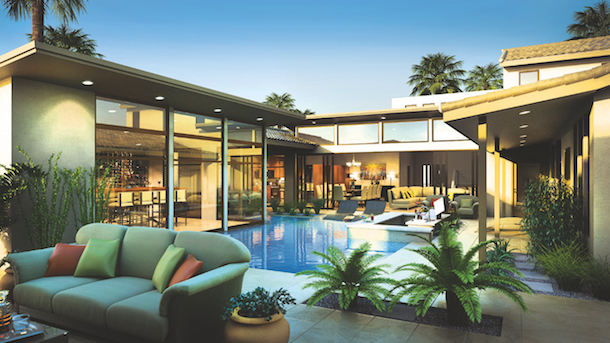
We have expandable file folders, expandable luggage, expandable dining room tables; the list goes on. But what if home buyers had expandable rooms?
If the family room had a connected “idea space,” it could afford additional family uses while the family room was already engaged in activities. It could be used as an area for working on homework, an informal special dining area for the kids, or a quiet area for reading and recluse.
A special idea space could be a den, man cave, woman cave, mom’s management center, tech center for the family, hobby and craft center, or a play room for children, all of which would be connected to the hub of the house—the kitchen.
If the dining room had an idea space it could expand the formal area to accommodate more people for those special holiday dinners, or it could turn into a serving bar, a wine service area, or casual/conversational seating while waiting for dinner. How about having two distinct dining areas: one that could be termed for formal dining and the other to be used for everyday life experiences?
If the kitchen had idea spaces they could expand the utility of the kitchen in different directions based on the homeowner’s specific needs or wants beyond a typical kitchen configuration; pantries could be large enough to accommodate a management center, appliance bar, or supersized pantry.
If a laundry room had enough idea space it could take on numerous utilities, such as extra storage or a supersized dry goods pantry.
A garage with idea space could be a monster garage offering room for up to five cars and a 50-foot motor home. If it had space that is extra wide, extra deep, and extra functional, complete with high ceilings that allow for extra storage off the floor, it could offer plenty of room for toys like boats, motorcycles, Ski-Doos, bicycles, and, of course, a man cave (or a woman cave).
If the home used sliding glass doors and walls to blur the line between outdoor and indoor spaces, it could create privacy when needed between two interior rooms.
What if 92 percent of homes purchased were bought (or chosen) by women? Wouldn’t you want to learn what women prefer and how they want to live in their home? Wouldn’t you want to include lots of storage and idea spaces?
 Nick Lehnert, KTGY Group Inc.,
Nick Lehnert, KTGY Group Inc., KTGY’s R&D Studio and Idea Lab
[PAGEBREAK]
New Elevator Applications
Due primarily to initial construction cost and long-term maintenance considerations, residential buildings have historically included elevators only when they are functionally essential (such as mid-rise or high-rise buildings), or where they are mandated by building codes or accessibility laws. Recent project goals and market trends have allowed MVE & Partners to explore unique elevator design applications, as well as the inclusion of elevators in buildings where they have previously not been feasible. Three recent projects with elevators incorporated in the design include the following:
Meridian is a luxury mid-rise condominium project in Newport Beach, Calif. It utilized a double-sided elevator with an integrated security system to achieve private access from common amenity areas and secure parking directly in each home. This plan is the ideal solution not only for security, but also for privacy and convenience.
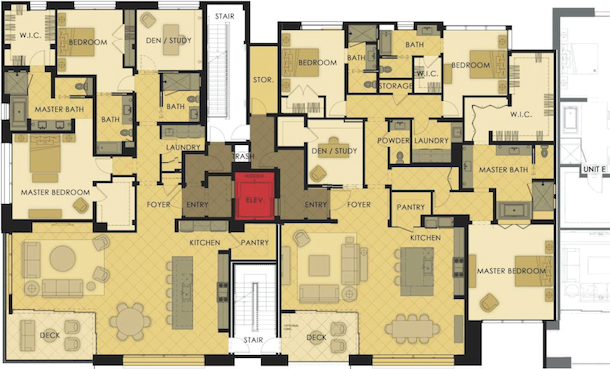
The Irvine Community Land Trust in partnership with AMCAL Housing had the goal of creating an on-grade, high-density affordable housing community that goes well beyond code minimums for accessibility to meet the special needs of disabled tenants. The incorporation of an elevator in this three-story, on-grade building was only one of the many universal design elements included in the Alegre project.
MVE is re-planning Lennar Corp.’s A-Town Metro site and re-organizing the street framework to create parcels with more efficient shapes and critical sizes. As part of this effort, the design team is repositioning the residential project types to include senior-targeted, on-grade buildings (stacked flats with density ratio at 24 du/ac) with private, convenient elevator access from private garages to front doors.
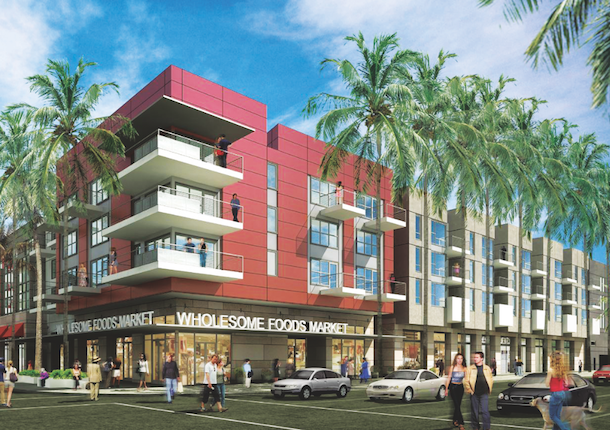
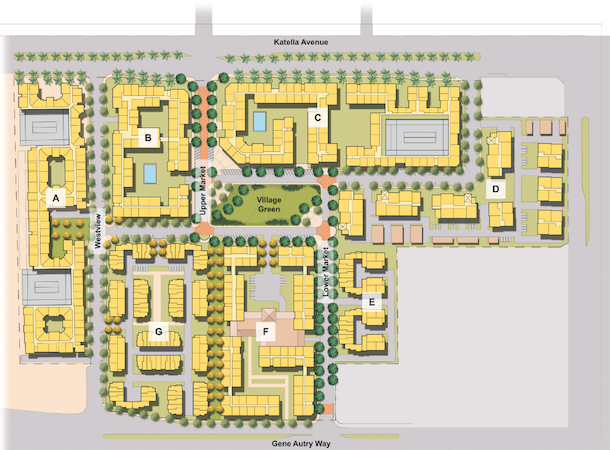
Darin Schoolmeester, AIA, NCARB
MVE & Partners Inc.
www.mve-architects.com
dschool@mve-architects.com
[PAGEBREAK]
Bringing Modern to the Masses
Today’s homeowners are looking for something different than the same old elevations they’ve seen over and over. Innovative architecture is in demand and the old boxy floor plans are being replaced with open, flexible layouts. Technological modern conveniences and clean-lined, minimalist interiors are considered fresh, new alternatives. Home plans offering plentiful natural light and a connection to the outdoors are desirable for their naturally organic living environments.
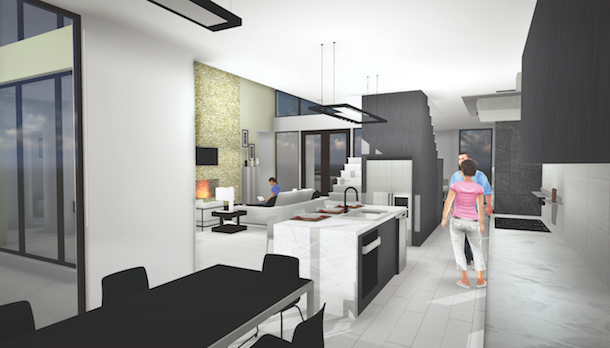
This two-story plan features distinctive architecture, minimalist interiors, attention to detail, indoor/outdoor living, and sustainable design. The warm, modern elevation opens to an interior with a refreshing blend of contemporary design, comfort, and pure luxury. Large overhangs and low-e, floor-to-ceiling sliding glass doors provide abundant natural light and a connection to the outdoor spaces. The sliding glass doors on the great room, breakfast nook, and master suite open to the home’s courtyard with covered lanai, pool, and spa.
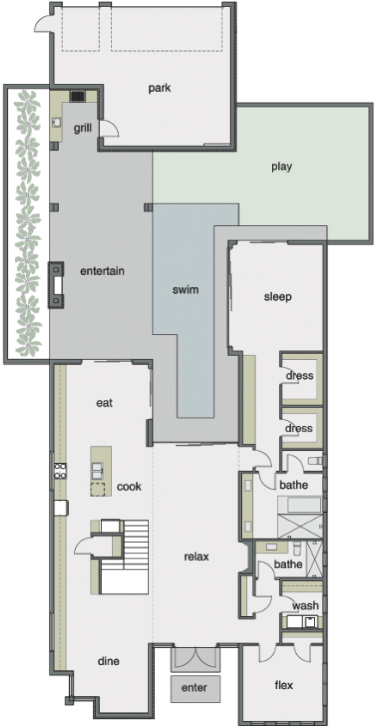
The covered lanai increases the home’s living and entertainment areas by more than 1,000 square feet. By using consistent materials and a simple palette inside and out, these indoor and outdoor areas blur one into the other. Built into the lanai are motorized retractable screens that can be lowered to protect these indoor/outdoor spaces from insects and solar glare. The screens also can retain up to 90 percent of the home’s conditioned air, depending on the density of the mesh chosen.
Working in harmony with the architecture, interior details develop a feeling of luxurious, resort-style living. This plan incorporates interior architectural elements including backlit floating ceilings, direct-vent fireplace, and a stacked stone feature wall. A sculptural staircase provides an architectural focal point throughout the primary living area. Together these contemporary elements create dramatic spaces for everyday living.
 Phil Kean, AIA
Phil Kean, AIAPhil Kean Designs; WayCool Homes designed by Phil Kean
[PAGEBREAK]
Creating Seamless Indoor/Outdoor Living
Increasingly, today’s new homebuyers want an intimate space, and the Alta Del Mar plan provides a private outdoor environment, separate from the public realm of front courtyard spaces and neighbors in the rear yard.
This 4,458-square-foot design delivers the indoor/outdoor lifestyle and living spaces buyers seek today. The mid-plan courtyard space allows unexpected rooms in the house to enjoy an indoor/outdoor experience. In this case, the living room and formal dining room expand to the side courtyard. The design takes the pressure off traditional yard spaces because the courtyard acts as an additional outdoor area.
Designed for move-up family buyers, this home includes a generous rear yard; however, the addition of a side courtyard provides a more intimate outdoor area for a couple or smaller gatherings. Alta Del Mar amenities and benefits include the following:
• The fireplace and television make the courtyard a true living room rather than just a seasonal space.
• Extends the living and entertaining space.
• Covered patio provides a transition space from the indoor to outdoor environment.
• Opens up sight lines, allowing natural light and ventilation throughout the home.
• Provides the first-floor guest suite with direct access to an outdoor living room.
 Scott Adams, AICP
Scott Adams, AICPBassenian Lagoni
[PAGEBREAK]
Enabling Design Fills the Gap
We have an incredible opportunity for utilizing design to improve wellness and meet lifestyle desires. When we design for a variety of ages, abilities, and scenarios, all generations can live more independently and satisfied. That’s when we know we have made a difference. Every project and product must take three approaches to achieve enabling design solutions:
1. Human factors and ergonomics such as height, reach, and sensory abilities
2. Task goals
3. The user’s desires
Socially Sustainable Housing
Enabling homes are sustainable approaches to living as they incorporate no-step entries, wider doorways, outlets, and controls within 18” to 44” A.F.F., plus pullout trays and drawers. These features typically have been for people with mobility needs; but consider that typical able-bodied residents will be the largest beneficiaries. These features support wheeling suitcases or bikes in and out of the house, carrying sleeping children, heavy packages and furniture, cooking, bathing, and countless other activities because they consider human needs. Typically, we aren’t designing for these common activities. Yet homes that work for a variety of living situations, ages, and abilities work better for both initial homeowners and future buyers.
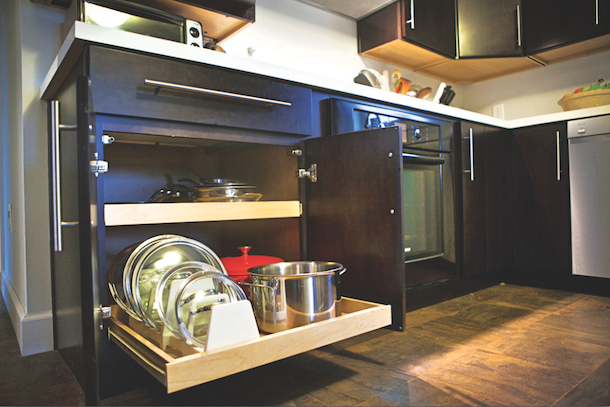 Photos: Lindsay France
Photos: Lindsay France
Technology as an Enabler
Technology can play a positive role in enabling a healthy, independent lifestyle. Riding the smartphone/tablet wave is ideal, as users exist in every generation. Thus, applying technology to safety and security is more welcomed than safety-specific devices such as traditional personal emergency response systems. Advanced tech products, combined with a home automation system, can control the HVAC, lights, lock and unlock doors, and let residents see who is at the door or who has come in. The user interface is often better and adjustable; just consider the tiny font on a grey LCD screen of a wall-mounted thermostat versus a home automation system on a tablet.
The New Normal of Community Planning
Since its inception at the turn of the previous century, single-family residential housing has been protected by zoning ordinances and designs that no longer meet society’s current needs. However, communities that reduce restrictions on Accessory Dwelling Units (ADUs) respect the double-digit increase in multigenerational home sharing over the past ten years. This approach reduces the need for informal care giving—particularly for the sandwich generation— and financial burdens for older parents and boomerang children. Road maintenance projects that incorporate the principles of complete streets—designing for the needs of non-motorized transit (pedestrian, wheelchair, stroller, and bicycle) by reducing lane width, increasing shoulder width, providing medians, and longer cross times with countdown signals—meet both our desire to walk and bike as well as our need for physical activity.
 Esther Greenhouse, M.S., CAPS
Esther Greenhouse, M.S., CAPS[PAGEBREAK]
The Lean Design
Utilizing lean design to distinguish and stand apart from competition has become a way forward for the country’s leading builders. Lean design takes an alchemist approach to planning. It combines the knowledge and skill of the building team, trades, and architect to develop design concepts that optimize marketability. The result becomes a home that builds efficiently, employs cutting edge trends, and maximizes absorption. A common misconception is that lean design is another term for value engineering. Value engineering is to lean design like a pepperoni is to pizza—just a component. The example design is an 1,860-square-foot rambler.
A. The great room/kitchen/dining all live together to create one large room. This setup is a favorite for casual buyers who love to entertain.
B. Bedroom No. 3 can easily convert to a study for empty nesters.
C. The unique buddy bath setup allows for multiple users for daily activities and does double duty serving as a guest powder room.
D. A large Costco pantry helps keep the contents organized.
E. A stairway leading to a bonus room above the garage allows for inexpensive optional space.
F. The owner’s tub has been eliminated, providing room for a large double shower.
G. A pocket office with a pocket door provides a great, messy space for bills and other paperwork.
H. A laundry area that is accessed by the hall and owner’s closet has been a huge hit with buyers in 2013.
I. A large covered lanai expands living space by creating an inexpensive outdoor room.
With lean design being the driver, this home is easy to build, efficient with materials, and responsive to the needs of today’s buyers. These benefits, combined with a charming exterior, make it real tough to beat at 1,860 square feet. Melding low-cost dramatic planning with a knockout exterior is the formula that many of today’s leading builders are using to increase profit margin and distance themselves from their competition.
 Todd Hallett, AIA, CAPS
Todd Hallett, AIA, CAPSTK Design & Associates
[PAGEBREAK]
The Two-Bedroom Home Redefined
Requests for two-bedroom homes are increasing as Baby Boomers begin to downsize and Millennials delay marriage and starting families. Additionally, approximately 20 percent of new home buyers are single women, many of whom want more efficient homes.
However, the two-bedroom house has always presented a challenge. The reason is simple; a third bedroom just doesn’t add much to the cost. Yet, this extra 170-to-180 square feet becomes a critical element when clients, appraisers, and real estate professionals calculate the ever-so-important cost per square foot. The low cost of a third bedroom helps amortize the total price of the home per square foot. It’s just the simple math of dividing the total cost by the total footage. Often, when builders construct a two-bedroom design, they merely eliminate one of the bedrooms from a standard three-bedroom plan. The result is a two-bedroom home that sells for almost as much as the same home with three bedrooms.
So, how are we redefining the two-bedroom home? First, and most important, by not eliminating any footage. Instead, we’re repurposing it. The 180 square feet from the third bedroom is now allocated to the living room, kitchen, and owner’s suite—the areas where many of our clients spend the majority of their time.
The result is a home with core living spaces that live like a much larger home, just without the third bedroom that a growing segment of the market simply doesn’t consider a priority.
Of course, there’s still the challenge of convincing appraisers and real estate agents that this preference all makes sense. The task won’t be easy since they’re the ones who insisted that every home needed a formal living and dining room long after many clients considered these areas as seldom-used space.
Finally, consider this: Some studies indicate that close to 25 percent of buyers actually want a two-bedroom home with nice amenities and details. That’s one-fourth of the market. While that figure might be high for many markets, it does seem to offer an opportunity for a builder to take advantage of a market segment that is being ignored.
 Larry W. Garnett, FAIBD
Larry W. Garnett, FAIBDLarry Garnett Designs
[PAGEBREAK]
Multigenerational Living
While the term multigenerational living came into the lexicon just a couple of years ago, the concept has been around for more than a decade. The Irvine, Calif.-based firm Robert Hidey Architects (RHA) has been designing homes with some form of detached autonomous living space since 2000, including Esperanza—a development of 1,650-2,100-square-foot homes in Palm Desert for Taylor Woodrow (now Taylor Morrison)—and La Cima, 4,000 to 6,000-square-foot luxury homes in Irvine for Laing Luxury Homes.
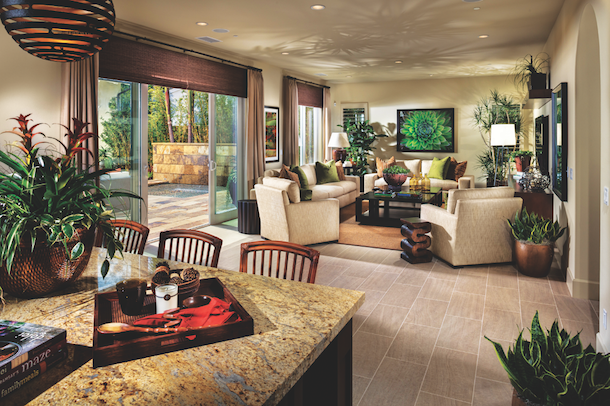
After the economy crashed, the concept of multigenerational living began to receive a lot of attention from developers because of its appeal to a broad range of buyers who suddenly needed to incorporate in their households aging parents, boomerang kids, or extended family who wished to maintain their sense of independence. The need for multigenerational housing is still relevant today. Even though we have moved into a stronger housing market, separate living spaces to accommodate the privacy of family members are becoming extremely common in new homes, regardless of the price point.
RHA’s recent award-winning Lambert Ranch project in Irvine received broad national attention for its array of options for private quarters, including models with a second master suite on the ground floor, featuring exterior and interior entries, as well as free-standing guest houses and even compound estates.
Residential builder clients today expect floor plan solutions with optional independent living quarters. Indeed, the firm has recently designed starter homes in Santa Clarita that offer separate first-level, lock-off suites that can be occupied by family members or rented out to friends, as well as in a large luxury project in Playa Vista. Both are equipped with in-suite bathrooms, larger storage space, and a private entry so occupants can come and go without imposing on the family.
A. Separate covered entry to detached living quarters lends a sense of individuality to living quarters.
B. Popular open floor plan comfortably incorporates a living suite and kitchenette area with a dining nook.
C. Larger master bedroom with its W.I.C, full, oversized bathroom and dual vanity is reminiscent of hotel suites and larger homes.
D. Covered loggia with breezy outdoor kitchen and strategically organized courtyard provides a common ground where inhabitants of both homes can interact.
E. Oversized garage accommodates the storage needs of multiple families.
F. Spacious great room in main house comfortably accommodates multiple families.
G. Separate laundry rooms within each house add to the independence of each household.
 Robert Hidey, AIA
Robert Hidey, AIARobert Hidey Architects
[PAGEBREAK]
Community First, House Second
Two important market forces have emerged since the recession began. There are now legions of Baby Boomers who’ve decided it’s time to downsize, and in many cases move closer to the center of town where they can be less automobile dependent as they age. Their offspring, the Millennials, who grew up in suburbia, have had quite enough of that splendid isolation and never want to go back. Both groups are looking for vibrant, mixed-use, walkable communities where they can enjoy shopping and socializing close to home.
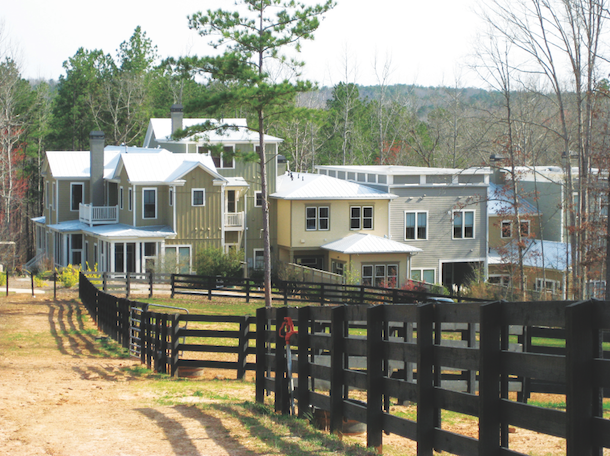
In fact, the desire for this kind of community-oriented living is nothing short of astounding. In the last couple of years, I’ve heard from so many “Not So Big House” fans who are actively searching for the perfect community first and the house as a secondary concern. Community is where it’s at. Somehow, through all the deprivation and misery of the recession, we’ve rediscovered each other, and realized that a bit of togetherness is actually quite desirable. We’ve learned that life is more fun when we have the opportunity to help each other out a bit from time to time. It’s not just an Old World way of living—it’s enjoyable! We actually feel better about ourselves when we’re situated in places where we can easily reach out to one another if we want to.
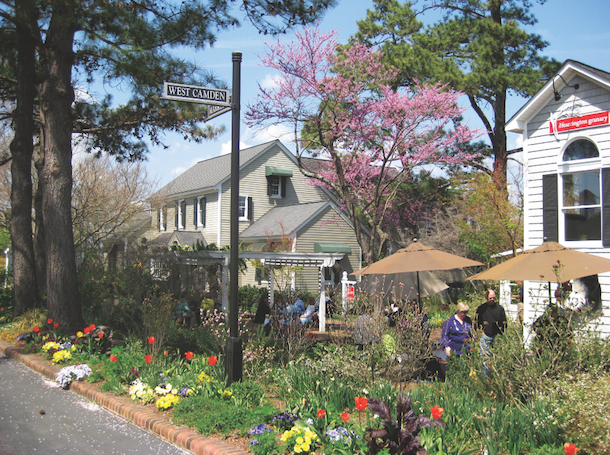
Don’t get me wrong. There’s still the need for privacy, but many buyers today are looking for both community and privacy. So as I look into my crystal ball, I’d say we’re heading for a period of reinvesting in existing neighborhoods and inner ring suburbs, with denser, more walkable, community-oriented infill developments that take advantage of and strengthen what’s already there. The best places for new development, I believe, will be within walking distance of the local coffee shop, restaurants, and weekly farmer’s market.
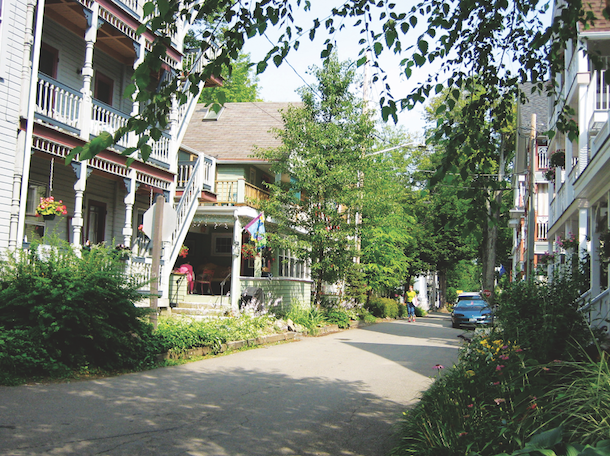
Ever since I moved to this country from England four decades ago, I’ve wondered how I could help impart the message to Americans that there’s an upside to density and to walking a few blocks now and then, rather than driving everywhere. I now believe the message has been received, and that a shift is happening right before our eyes. It took the great recession to wake us up to the opportunity of enjoying the unexpected company of friends and neighbors as we go about our days, sitting on the front porch, walking to the local shops, or sitting in the park watching the world go by.
 Sarah Susanka, FAIA
Sarah Susanka, FAIASusanka Studios

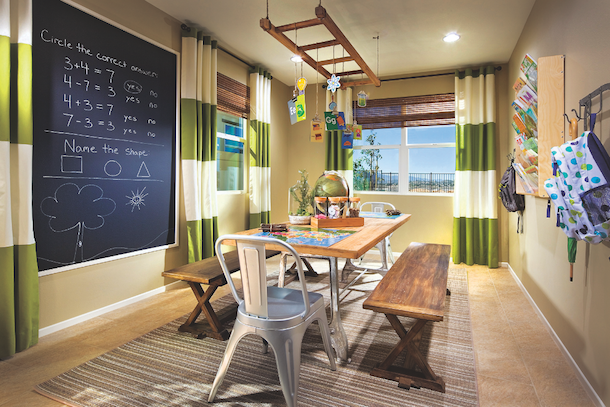
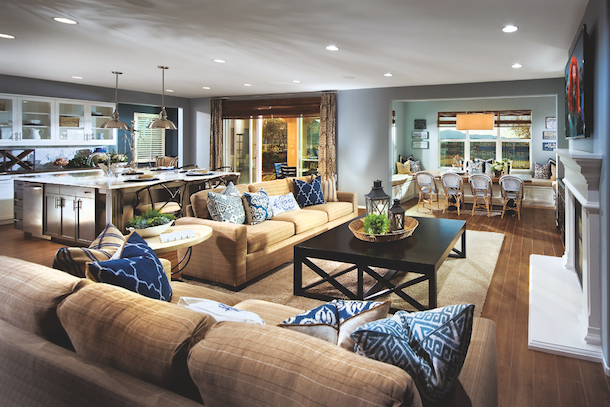

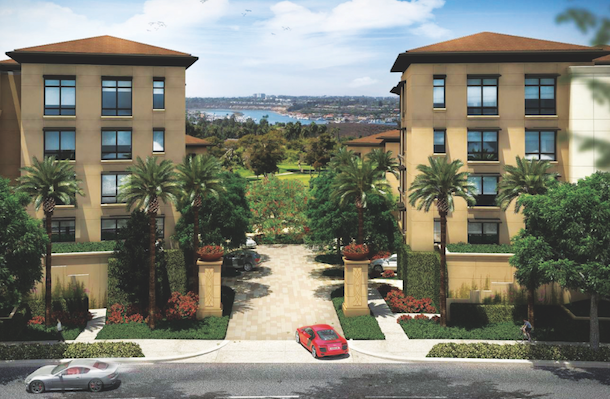

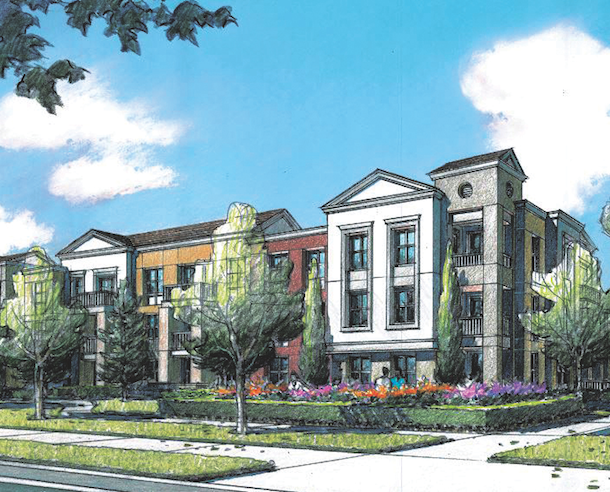
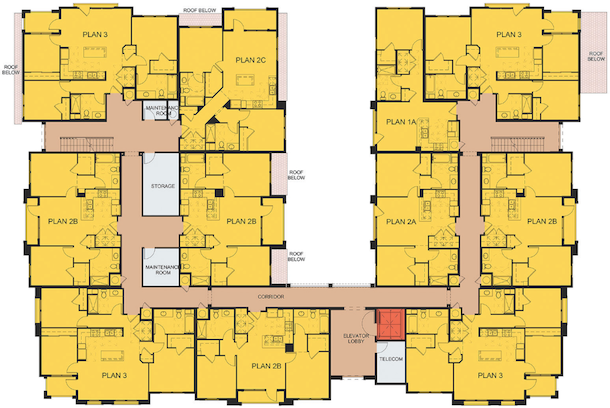



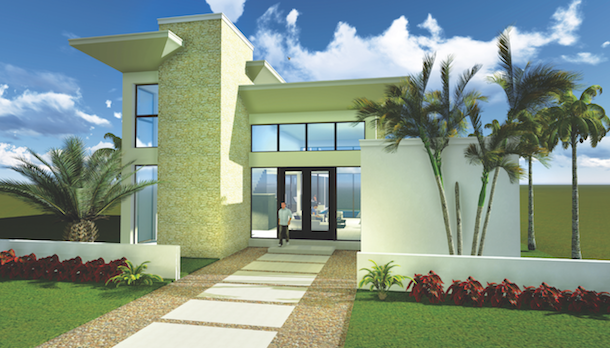


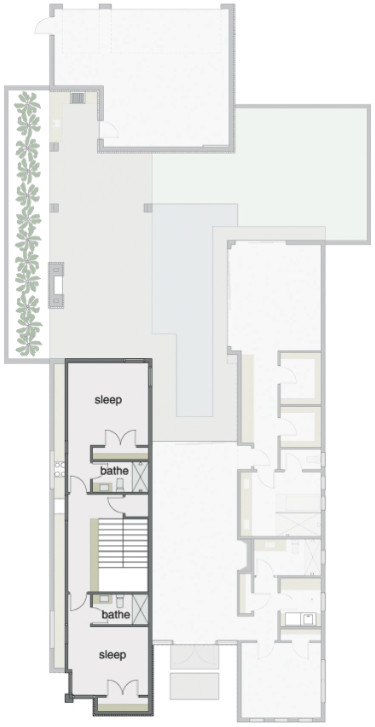
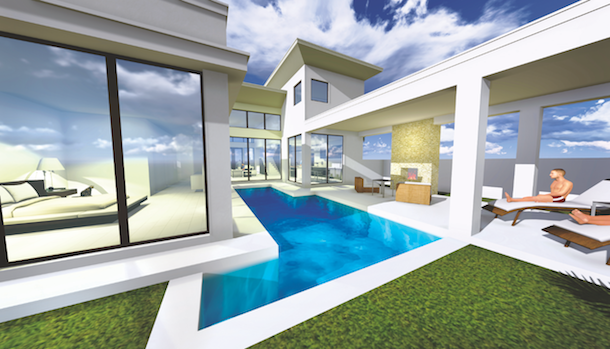
 Phil Kean, AIA
Phil Kean, AIA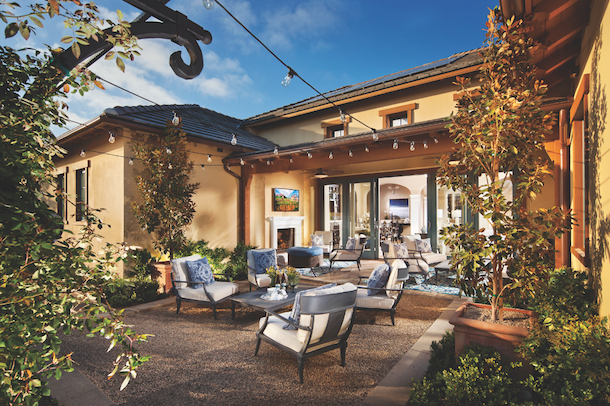
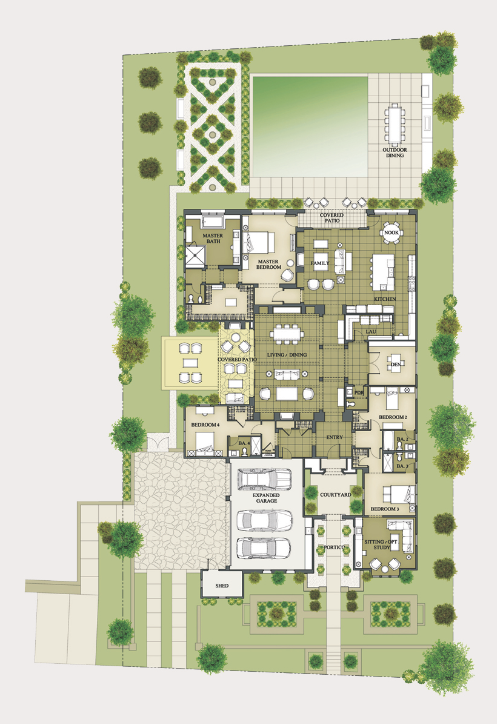
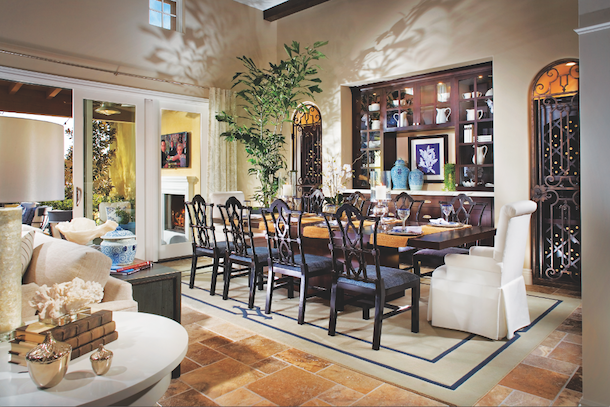
 Scott Adams, AICP
Scott Adams, AICP

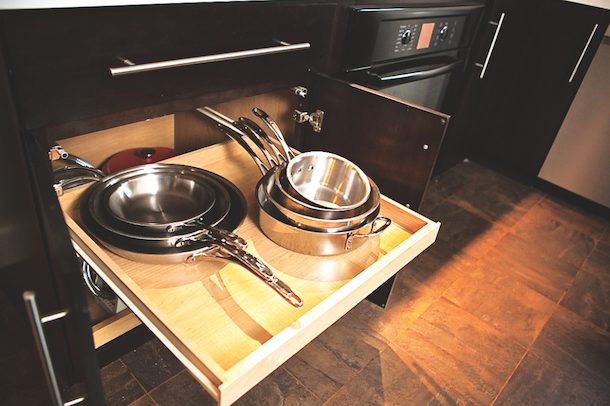
 Esther Greenhouse, M.S., CAPS
Esther Greenhouse, M.S., CAPS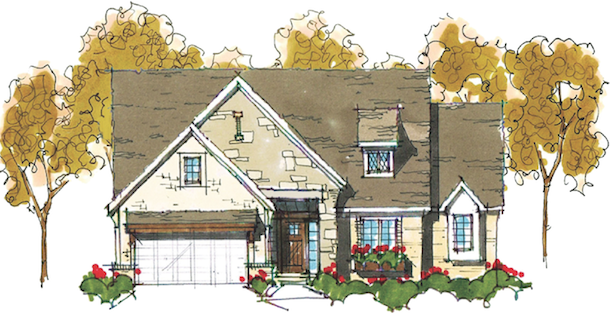
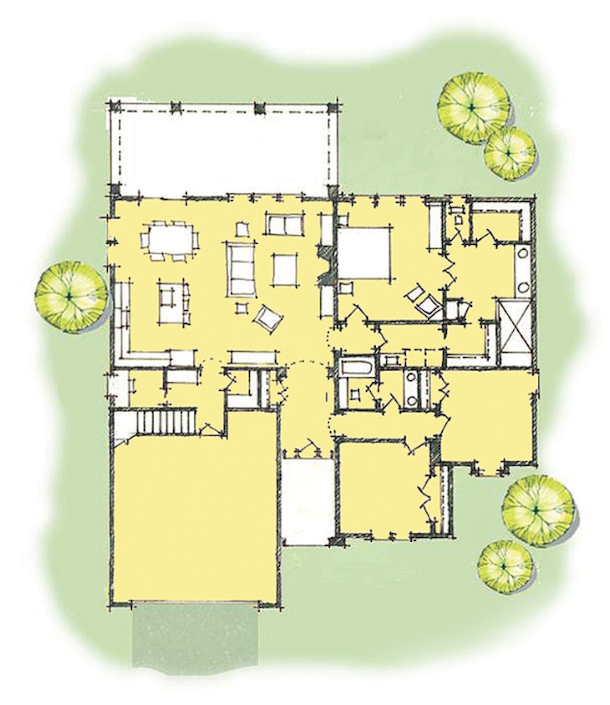
 Todd Hallett, AIA, CAPS
Todd Hallett, AIA, CAPS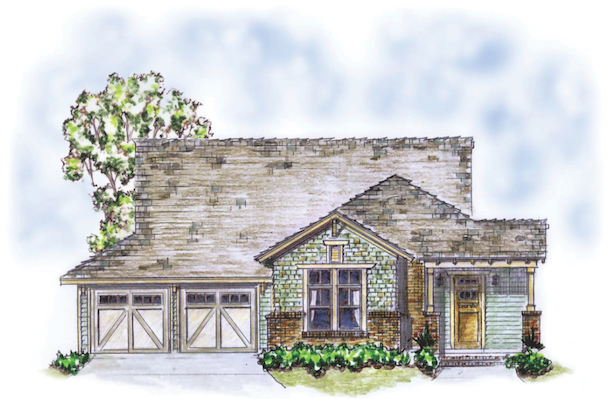
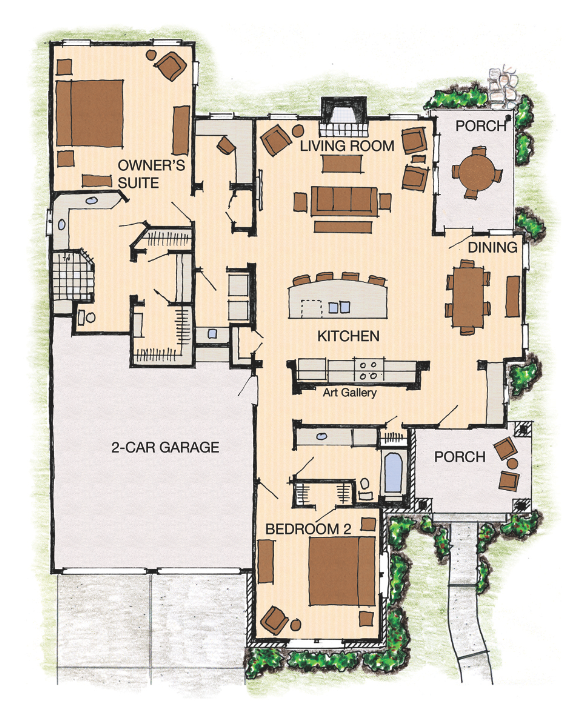
 Larry W. Garnett, FAIBD
Larry W. Garnett, FAIBD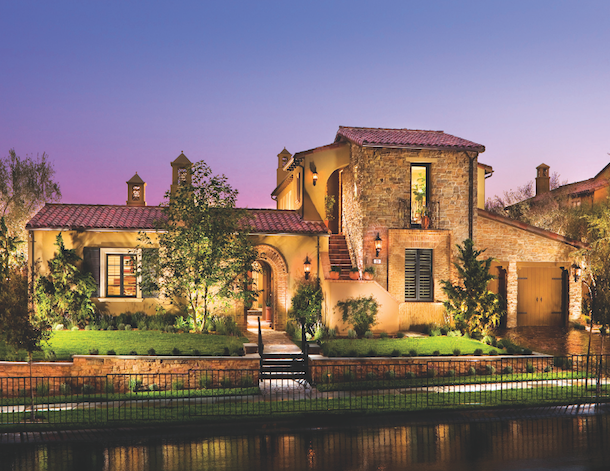

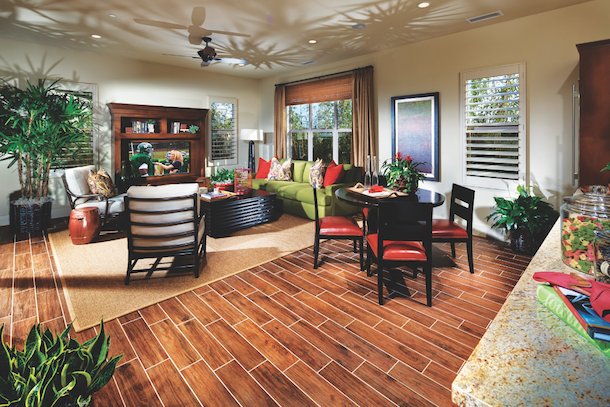
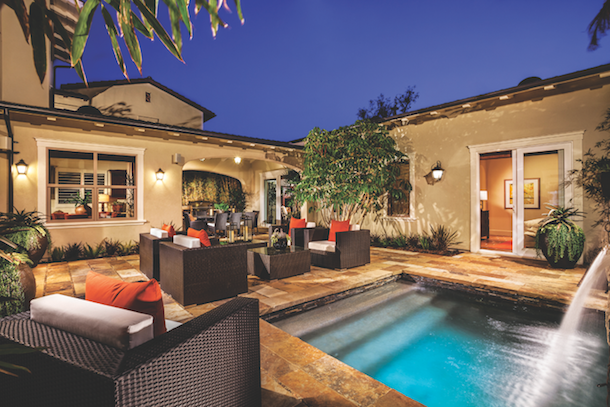
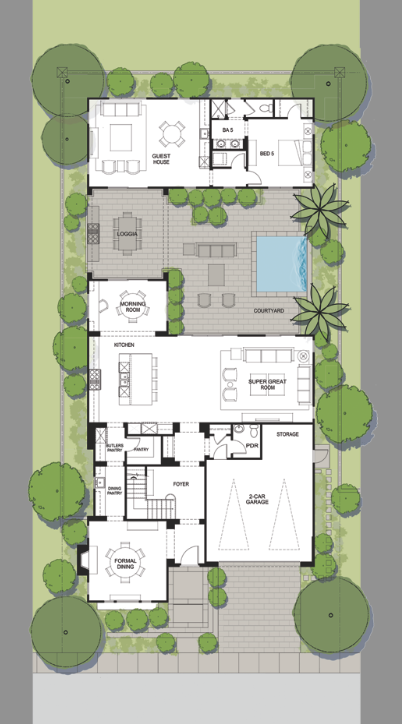
 Robert Hidey, AIA
Robert Hidey, AIA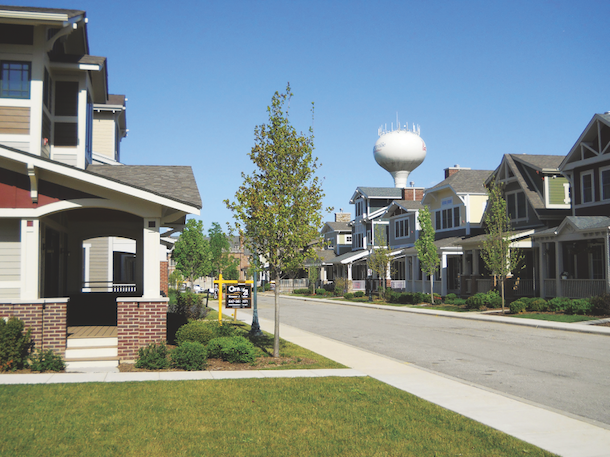



 Sarah Susanka, FAIA
Sarah Susanka, FAIA

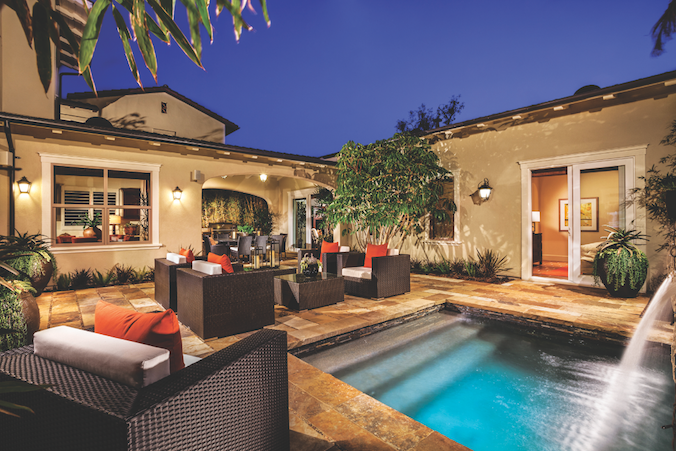
 Nick Lehnert, KTGY Group Inc.,
Nick Lehnert, KTGY Group Inc., 

